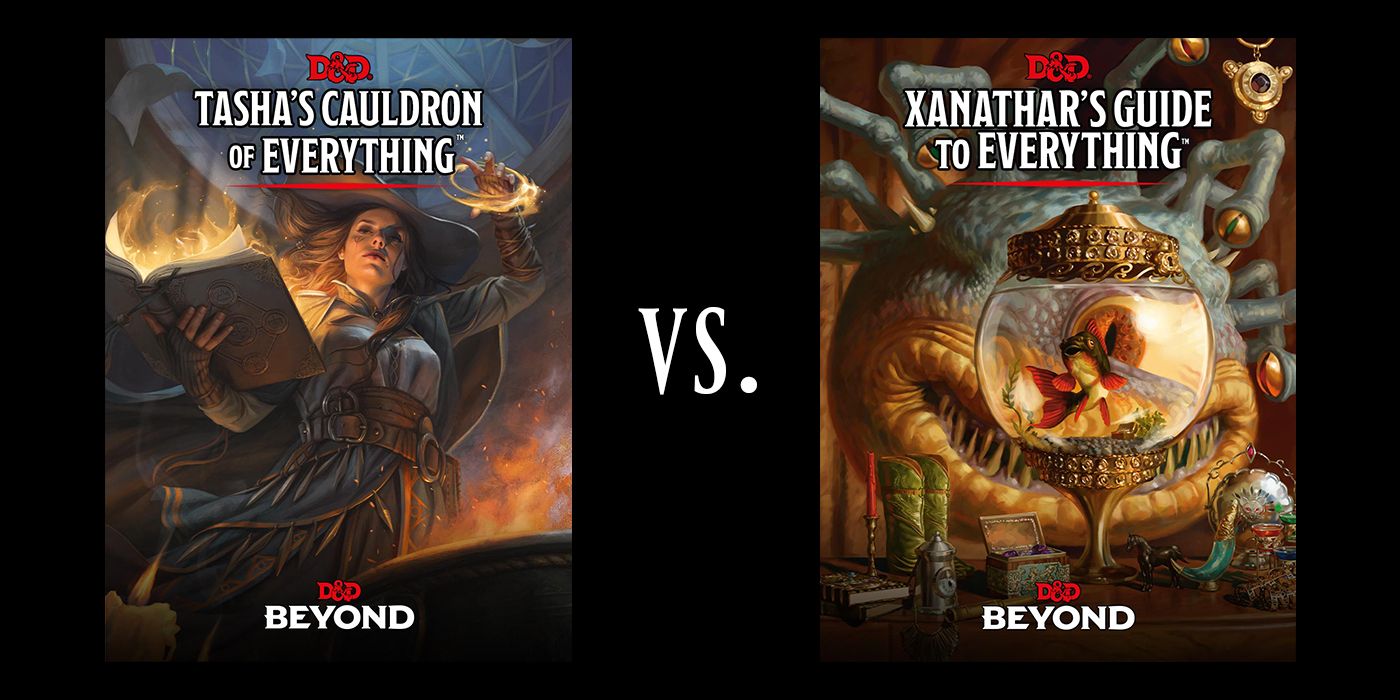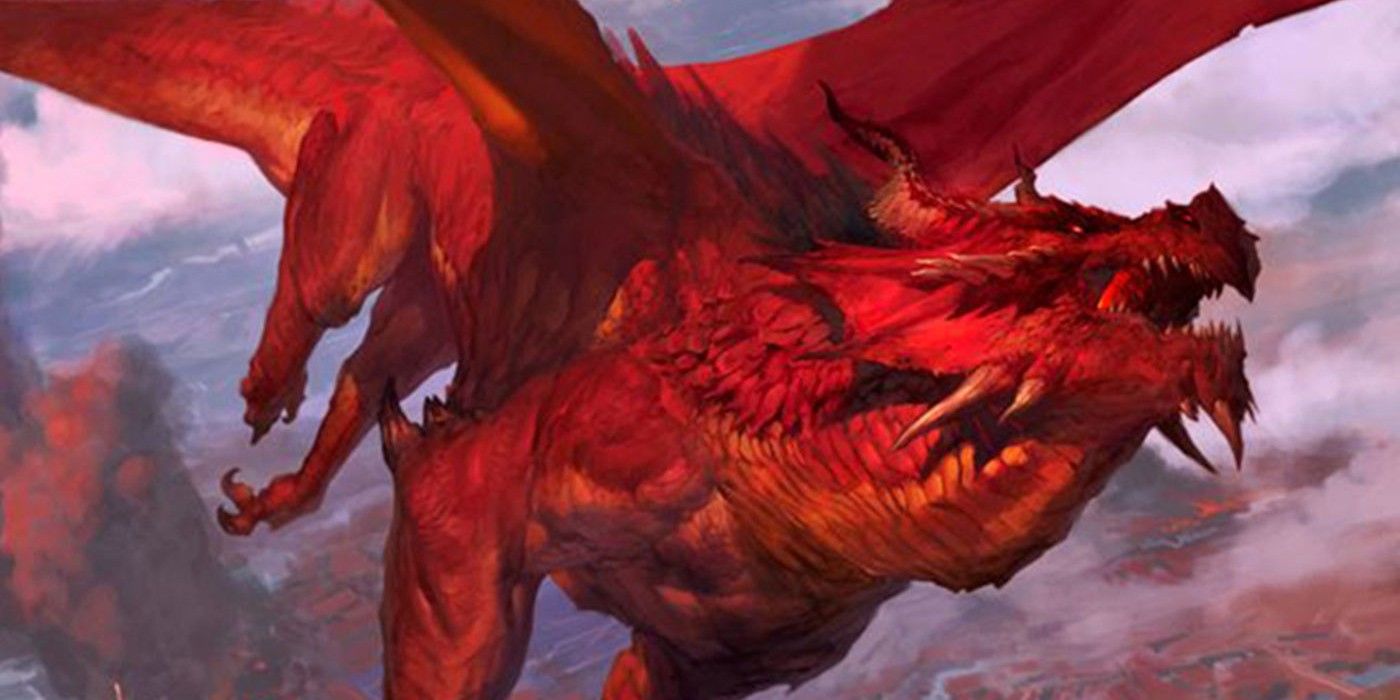Dungeons and Dragons: Comparing Tasha's Cauldron to Xanathar's Guide

Dungeons & Dragons' successful Fifth Edition has streamlined the world's most popular tabletop RPG to create an accessible entry point for new adventurers, and there is a lot of fun to be had in campaigns that rely upon the base source books. Experienced players yearning for the breadth and complexity of earlier editions, however, or those who are simply eager to have as many options as possible will likely want to run some supplementary tomes. Tasha's Cauldron of Everything and Xanathar's Guide to Everything are two of the most appealing options.
But why choose? Many experienced Dungeon Masters will undoubtedly incorporate both expansions into their campaigns, but the sheer number of new subclasses, items, mechanics, and spells included in each book could prove difficult track and balance. The array of character creation and customization options on offer may also be overwhelming for players who have only ever experienced vanilla 5E, and Wizards of the Coast gives Dungeons and Dragons players one more reason to choose between the two.
D&D has an official format of play known as the Adventurers League. Like Magic the Gathering's different seasonal card bans and additions, this unique format places certain strictures on what supplementary rules can be applied to a given game. Players who participate in this officially sanctioned format can earn special rewards within a given competitive season, so there is some incentive to color within the lines when crafting a campaign. Ultimately though, the decision should boil down to what will bring the most fun to the table.

Both Tasha's and Xanathar's contain a wealth of new subclasses, spells, and mechanics. Despite these commonalities, each guide lends itself to accomplishing certain goals. While each book contains new items, only Tasha's includes new magic items. Xanathar's, on the other hand, has 30 new subclasses, whereas Tasha's provides access to the Artificer class and just under 30 new subclasses. Xanathar's gives DMs many more options for expanding and customizing random encounters emphasizing deep combat, while Tasha's includes new locales and puzzle options, emphasizing exploration.
It is also worth noting that Tasha's is the newer book, including long-awaited rules for customizing racial traits and character backgrounds. But because it is newer, it can be more expensive ($45 to $50) than Xanathar's ($30) unless players manage to secure a deal.
To begin with, Xanathar's introduces the borderline-broken Hexblade subclass to Warlocks—essentially, the DnD equivalent to Dante from Devil May Cry. Hexblades gain a number of powerful options at their first level, including Hex Warrior, which bestows proficiency in medium armor, shields, and martial weapons, as well as the ability to use Charisma as a damage modifier in place of Strength. The signature ability of the Hexblade grants players the ability to curse targets, bestowing a damage bonus, expanded critical range (a rarity in 5E), and health recovery when Hexblades kills their cursed target. This is all on top of expanding the Warlock's usual array of toys. The Hexblade is also a tempting multiclass option, benefiting almost any class that scales off of Charisma.
Xanathar's offers many other compelling subclasses (including the Cavalier, Arcane Archer, and Samurai options for Fighter), but its real strength are the expanded rulesets available for DMs. Those struggling to come up with compelling random encounters should pick up Xanathar's post-haste, as it breaks down encounters by biomes, providing food for thought on combat in a wide variety of specific environments. And devious DMs who relish watching their party squirm will get a kick out of the ten pages devoted to developing traps.
That's not to say that Xanathar's is solely focused on fights and peril, however. There is also an expansive section on activities for players to pursue during downtime between adventures, which is a great way to foster bonds between party members and make a campaign feel more immersive and real.
It's important to note, that since Tasha's is brand new, players are still experimenting with its offerings and as a result, its metagame is still in flux. So players who are determined to min/max stats and come up with absolutely brutal builds may be better off working with the known quantities Xanathar's represents. That said, Tasha's has some truly magical options for a few classes, including the Ranger. While Rangers are an awesome class thematically-speaking, there is no denying that 5E has been less kind to them, mechanically, than certain other hybrid classes. With the vanilla ruleset, would-be Aragorns often end up straddling the middle ground between Druid and Fighter with fewer advantages and a less distinct identity than either.
Enter Tasha's Cauldron of Everything and the distinctive, powerful Swarmkeeper subclass. Swarmkeepers do exactly what their name implies: controlling a sentient legion of insects and bugs to assail their foes and protect themselves. Another notable subclass is the Soulknife for Rogues, which may provide players with the best opportunity to role-play a Phantom Thief in DnD. (Ironically, the mind-infiltrating Soulknife is more like Persona's Phantom Thief than the death-bonded Phantom Rogue subclass, which is also included in Tasha's.) Clockwork Soul sorcerers are another powerful addition that can provide lots of fun.
Tasha's greatest toy, however, might be the optional rules for customizable backgrounds and racial traits. Players looking to kill everything in their path generally prioritize stats in character creation, but experienced players know that a finely tuned background can make all the difference in quality roleplaying.
In terms of DM tools, Tasha's provides a number of useful rulesets to flesh out natural (and unnatural) disasters and NPCs with specific roles, such as sidekicks, and party patrons. The greatest boon by far, however, is the wealth of example puzzles at the end of the book. Puzzles are a great way to encourage party cooperation, vary the pacing of a game, and have players make use of more fringe skill sets. Designing them, however, is a non-trivial endeavor. Even though players with DM experience may be familiar with the example puzzles themselves, the book's offerings can be used as rough frameworks for developing original challenges unique to the campaign.
Dungeons & Dragon's supplemental rulebooks, Tasha's Cauldron of Everything and Xanathar's Guide to Everything, are available now.
 Reviewed by Unknown
on
January 24, 2021
Rating:
Reviewed by Unknown
on
January 24, 2021
Rating:

Post a Comment